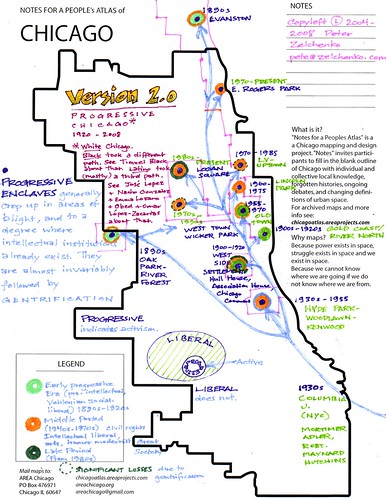"The truth is that as the novelty of online activism wears off, millions of formerly socially engaged individuals who trusted digital organisations are coming away believing in the impotence of all forms of activism. Even leading Bay Area clicktivist organisations are finding it increasingly difficult to motivate their members to any action whatsoever. . . . The Clicktivists are to blame for alienating a generation of would-be activists with their ineffectual campaigns that resemble marketing."Today's antidote to Clicktivism? A protest flash mob performs an impromptu musical number in a Seattle-area Target. Hope it inspires you to go beyond clicks and petitions and boycotts.
Monday, August 16, 2010
Less Clicktivizm, more. . . .
Finally, someone's saying it out loud, what we all think when we get a request to sign the 5000th online petition to end the war in Afghanistan, or support gay marriage, or protest the border wall or . . . fill in the cause du jour here__________. Micah White calls out not only the futility inherent in online "Clicktivism" in his recent article in the Guardian, but also explains how the combined passivity and ineffectualness of this new form of engagement based on marketing principles actually damages social movements and alienates new activists:
Thursday, August 5, 2010
Sunday, August 1, 2010
Police stop community conversation enlived by art and place, maybe we need a People's Atlas of Seattle.

The Corner: 23rd and Union stood for a little over a year at a Seattle intersection near the geographic center of the city in the heart of the Central District, the city's historic African American neighborhood as seen in segregation maps from the 1960s. The installation was an experiment in community storytelling and dialogue using public art as the spark, inspiring neighbors to react, sing, remember, speak and listen to each other across chasms. They called comments and reflections into a voice recording which was then uploaded and curated onto a companion web site.
Created by KUOW public radio producer Jenny Asarnow, the project was well received in the neighborhood. Asarnow said "I felt like it had been an outlet for people, for a large number of people. They had been able to speak their minds and be creative and listen to people from their own community who they might not have heard from otherwise."
Slide show of the installation
Last Monday, the installation was abruptly dismantled after police told the owner of the vacant lot and Asarnow that they had received complaints about one of the photographs in particular, shown above. Read the full story here. It's unclear if it the police themselves were objecting to this image of a black man with a criminal record, or if they were merely passing on complaints of anonymous neighbors. Either way, the police clearly wanted the installation taken down, ending the community dialogue on a one-sided note. The phone number connected to the site is no longer accepting messages, unfortunately cutting off the possibility of a real community response.
The installation may be resurrected as an exhibit at the Northwest African American Museum, but it will be removed from the corner that gave it significance and life. The location itself was an integral part of the piece, evoking memories and creating interactions that would have been impossible otherwise, giving "site specific" new meaning.
Preserving "The Corner" in place and time, making sure events like these don't slowly fade away as a footnote or a fuzzy memory, is one idea behind "People's Atlas" project. Creating a People's Atlas of Seattle could be an archive for the history and importance of place that "The Corner" uncovered.

“Notes for a Peoples Atlas” is a multi-city, participatory mapping and design project that began under the sponsorship of AREA Chicago in 2005 with a Chicago-based project, and has now traveled to Zagreb, Croatia and Syracuse, NY. “Notes” invites participants to fill in the blank outline of the political border of their city or region with individual and collective local knowledge, forgotten histories, ongoing debates, and changing definitions of urban space. “Notes” generates dialogue and open-ended imagining about urban space and history, taking seriously the expertise and ideas of “nonspecialist” community members. When archived, it presents information in a form that is accessible, well-designed, and visually rich.
Subscribe to:
Posts (Atom)
